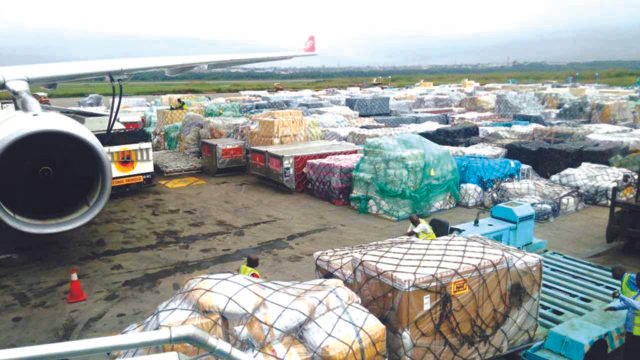The International Air Transport Association (IATA) released March 2021 data for global air cargo markets showing that air cargo demand continued to outperform pre-COVID levels with demand up by 4.4 per cent.
African airlines’ cargo demand in March increased 24.6 per cent compared to the same month in 2019, the strongest of all regions. Robust expansion on the Asia-Africa trade lanes contributed to the strong growth. March international capacity decreased by 2.1 per cent compared to March 2019.
March demand reached the highest level recorded since the series began in 1990. Month-on-month demand also increased, albeit at a slower pace than the previous month, with volumes up 0.4 per cent in March over February 2021 levels.Global demand was up 4.4 per cent compared to March 2019 and 0.4 per cent compared to February 2021. This was a slower rate of growth than the previous month, which saw demand increase 9.2 per cent compared to February 2019. A weaker performance by Asia-Pacific and African carriers compared to February contributed to softer growth in March.
Global capacity continued to recover in March, up 5.6 per cent compared to the previous month. Despite this, capacity remains 11.7 per cent below pre-COVID-19 levels (March 2019) due to the ongoing grounding of passenger aircraft.
Airlines continue to use dedicated freighters to plug the lack of available belly capacity. International capacity from dedicated freighters rose 20.6 per cent in March 2021 compared to the same month in 2019 and belly-cargo capacity dropped by 38.4 per cent.
IATA’s Director-General, Willie Walsh, said air cargo continues to be the bright spot for aviation. Walsh observed that amid the demand spike, airlines are taking all measures to find the needed capacity.
“The crisis has shown that air cargo can meet fundamental challenges by adopting innovations quickly. That is how it is meeting growing demand even as much of the passenger fleet remains grounded. The sector needs to retain this momentum post-crisis to drive the sector’s long-term efficiency with digitalization,” he said.
Asia-Pacific airlines saw demand for international air cargo drop 0.3 per cent in March 2021 compared to the same month in 2019. The slight weakness in performance compared to the previous month was seen on most of the trade lanes connected with Asia. International capacity remained constrained in the region, down 20.7 per cent versus March 2019. The region’s airlines reported the highest international load factor at 78.4 per cent.
North American carriers posted a 14.5 per cent increase in international demand in March compared to March 2019. This strong performance reflects the strength of the economic recovery in the US. In Q1, US GDP rose by 6.4 per cent in annualized terms, up from 4.3 per cent in Q4 bringing the country’s economy close to pre-COVID levels. The business environment for air cargo remains supportive; the new export orders component of the PMI rose to its highest level since 2007. International capacity grew by 1.8 per cent compared with March 2019.
European carriers posted a 0.7 per cent increase in demand in March compared to the same month in 2019. Improved operating conditions and recovering export orders contributed to the positive performance. International capacity decreased by 17 per cent in March 2021 versus March 2019.
Middle Eastern carriers posted a 9.2 per cent rise in international cargo volumes in March 2021 versus March 2019. Month-on-month, Middle East carriers posted the strongest growth of all regions, up 4.4 per cent. Of the region’s key international routes, Middle East-North America and Middle East-Asia have provided the most significant support, rising 28 per cent and 17 per cent respectively in March compared to March 2019. International capacity in March was down 12.4 per cent compared to the same month in 2019.
Latin American carriers reported a decline of 23.6 per cent in international cargo volumes in March compared to the 2019 period; this was the worst performance of all regions. Drivers of air cargo demand in Latin America remain relatively less supportive than in the other regions. International capacity decreased 46.0 per cent compared with March 2019.
